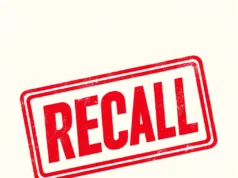
When a defective product causes harm, injury, or property damage, the victims may be entitled to compensation through a product liability lawsuit. These complex legal cases involve multiple stages and require a thorough understanding of the law and the ability to prove that the product was defective and directly caused the damages. This article will explore the anatomy of a product liability lawsuit, from the initial filing to the potential outcomes.
Step 1: Filing the Complaint
The first step in a product liability lawsuit is filing a complaint with the appropriate court. The complaint outlines the basis for the lawsuit, including:
- The specific product that caused the harm
- The nature of the defect (design, manufacturing, or marketing)
- The injuries or damages suffered by the plaintiff
- The alleged negligence or wrongdoing of the defendant (manufacturer, distributor, or retailer)
Step 2: Serving the Defendant
Once the complaint is filed, the defendant must be formally notified of the lawsuit through a process called “serving.” This involves delivering a copy of the complaint and a summons to appear in court to the defendant. The defendant then has a specified period to respond to the complaint, typically by filing an answer or a motion to dismiss.
Step 3: Discovery
The case enters the discovery phase after the complaint and answer have been filed. During this stage, both parties exchange information and evidence relevant to the case, such as:
- Documents related to the product’s design, manufacturing, and testing
- Medical records and bills documenting the plaintiff’s injuries
- Witness statements and expert testimony
- Interrogatories (written questions) and depositions (oral testimony) of key parties
The discovery process allows both sides to build their cases and assess the strengths and weaknesses of their arguments.
Step 4: Pre-Trial Motions and Settlement Negotiations
As the case progresses, the parties may file various pre-trial motions, such as dismissing the case, excluding certain evidence, or granting summary judgment. If successful, these motions can significantly impact the course of the lawsuit and even lead to its dismissal.
Simultaneously, the parties may negotiate a settlement to resolve the case without going to trial. Many product liability lawsuits are settled out of court, which can be a faster and less expensive option for both parties.
Step 5: Trial
The case will proceed to trial if a settlement cannot be reached. During the trial, both sides present their evidence and arguments to a judge or jury, who will then determine the case’s outcome. The plaintiff bears the burden of proving that:
- The product was defective
- The defect caused the plaintiff’s injuries or damages
- The defendant is liable for the defect and the resulting harm
If the plaintiff prevails, the court will award damages, including compensation for medical expenses, lost wages, pain and suffering, and other relevant costs.
The Importance of Legal Representation in Product Liability Lawsuits
Given the complexity and high stakes of product liability lawsuits, it is crucial for plaintiffs to seek the guidance of an experienced attorney. A skilled product liability lawyer can help you:
- Investigate the cause of your injuries and gather evidence to support your claim
- Navigate the legal process and ensure that your rights are protected
- Negotiate with the defendant and their insurance company to seek a fair settlement
- Represent your interests in court and fight for the compensation you deserve
When selecting a product liability lawyer, look for someone with a proven track record of success in handling cases similar to yours, as well as the knowledge, skills, and resources necessary to take on large corporations and their legal teams.
If you or a loved one has been harmed by a defective product, don’t hesitate to seek legal representation. A product liability lawsuit can help you hold the responsible parties accountable, secure the compensation you need to recover from your injuries and protect others from suffering similar harm in the future.







